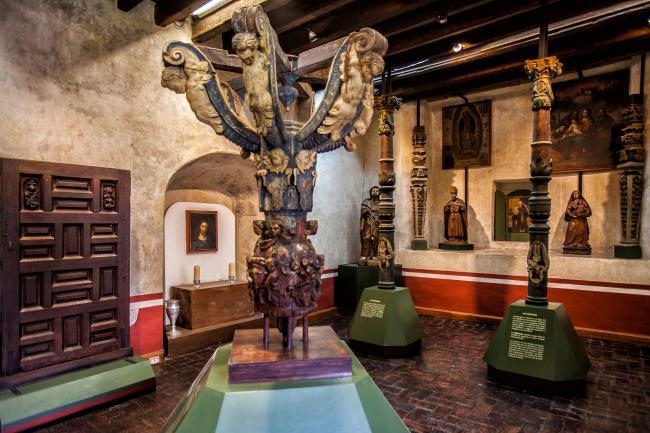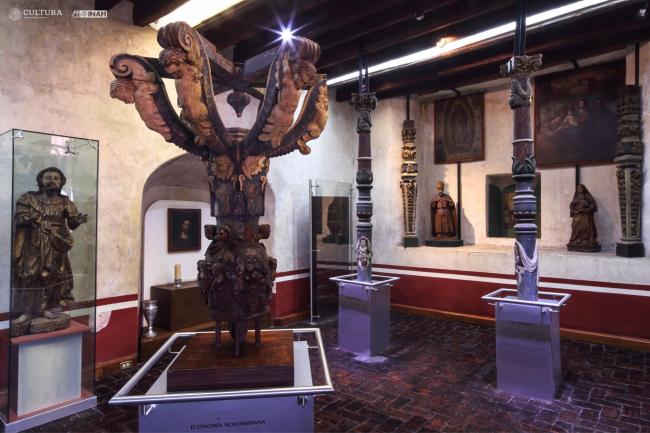
Colonial Period
Located in what was originally the friars’ private chapel, this gallery focuses on the evangelization activities of the colonial period. On display are artifacts recovered from the church that once formed part of the monastic complex, built between 1560 and 1570. These include wood-carved pieces such as four altarpiece columns and a pulpit base—remarkably preserved and valuable examples of Mexico’s colonial art.
To recreate the ambiance of the chapel, the altar is decorated with oil paintings and wooden sculptures of saints. Also featured are two baptismal record books from the surrounding neighborhoods, showcasing the original handwriting of the friars.
Another significant element of this gallery is the historical account of the first paper mill in the Americas, established in 1580. The convent housed a seminary for Indigenous languages, which required large amounts of paper for catechisms—essential tools for the friars’ missionary work.
The gallery concludes with a representation of a traditional altar featuring an 18th-century oil painting of Christ’s face. This ties to a religious and cultural practice still alive in Culhuacán today: "mayordomía", a system of religious stewardship that has its roots in the colonial period.



